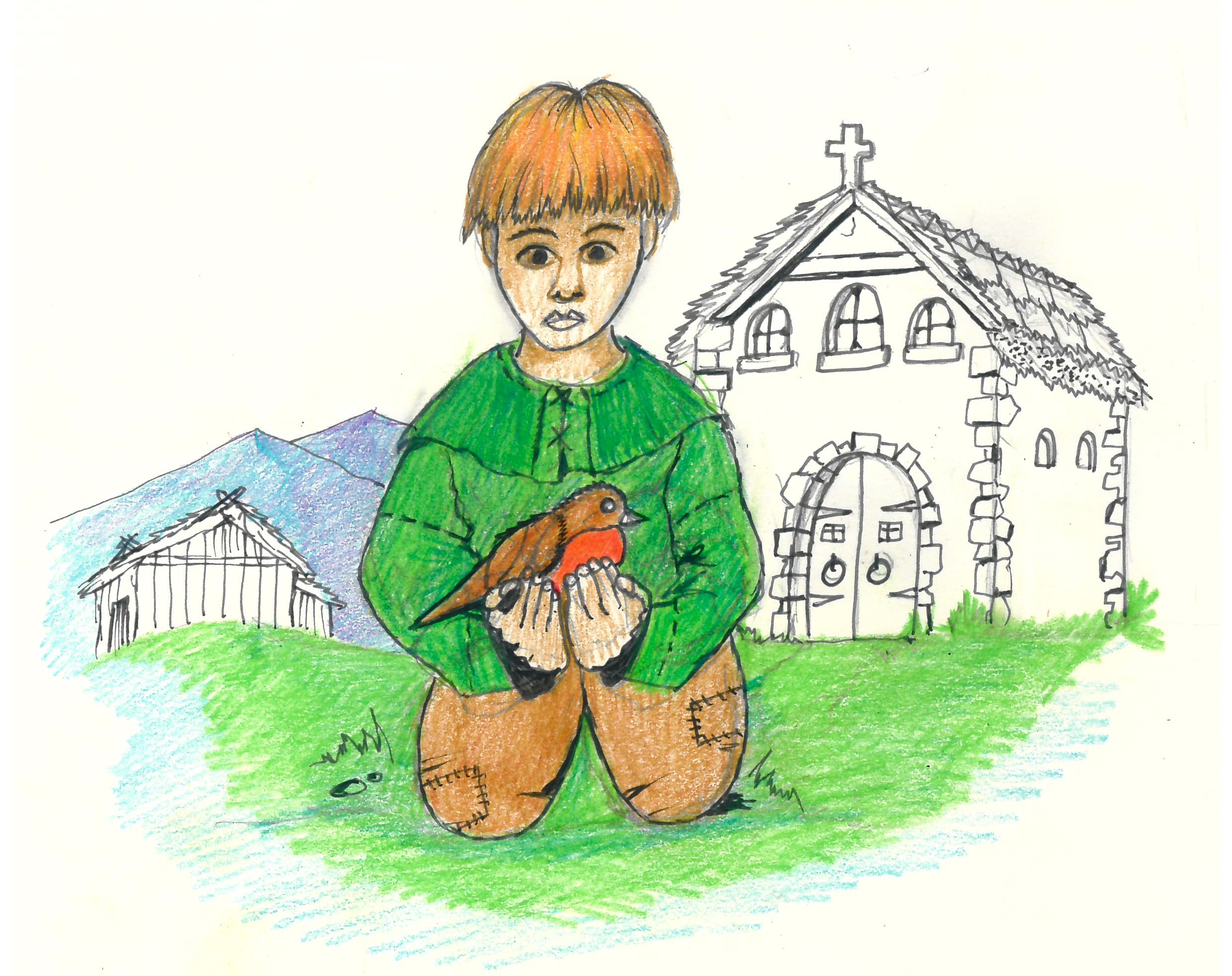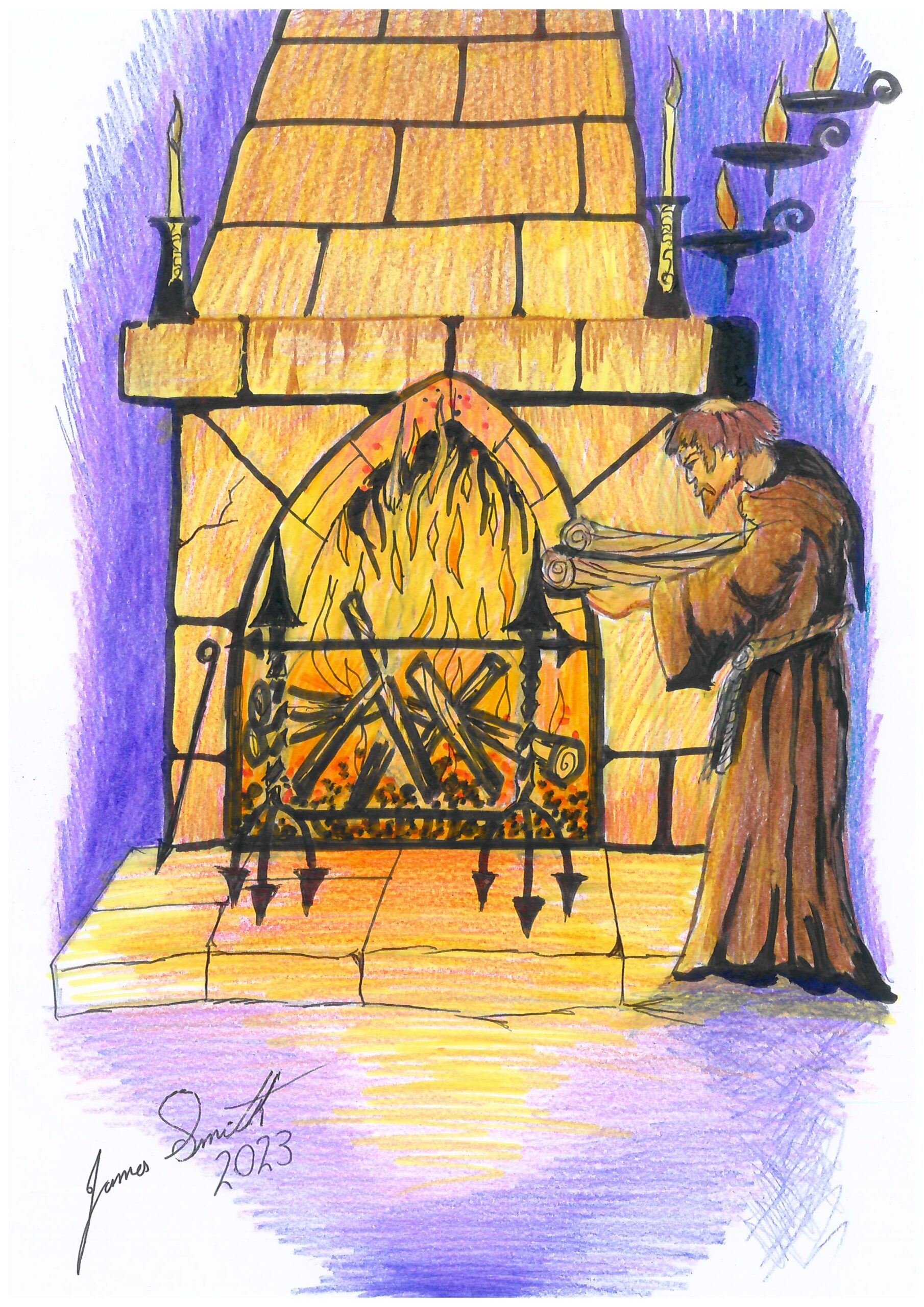Two members have worked together to produce the story of St Kentigern as part of our monthly newsletter, the Flourish Times. One member has researched and written the history, and another has illustrated this over several installments of the newsletter. Here is a condensed version, with a selection of drawings.

Saint Kentigern (also known as Saint Mungo) was born in Culross in Fife. His mother, Thenew, a princess, was the daughter of Lleuddun, from whom Lothian takes its name. He ruled the Kingdom of Goddodin. Thenew became pregnant with Kentigern, after being raped. Her furious father ‘tied her to a chariot and had her thrown from the heights of Traprain Law’. Both mother and unborn child survived. Believing that she was a witch, he cast her adrift in a coracle on the Firth of Forth, leaving her to the mercy of the wind and the waves. In the morning, she arrived on the beach in Culross.
Saint Serf, the abbot of the monastery in Culross took care of both mother and child. It was Saint Serf, who gave Kentigern the pet name of Mungo. Whilst a boy at the monastery, Kentigern performed his first miracles, Saint Serf had tamed a robin, which followed him everywhere, which the other boys had killed and put the blame on Kentigern. Kentigern took the bird in his hands and prayed over it and brought it back to life.
He was also in charge of the fires in the monastery; the other boys, who were jealous of Kentigern’s position with Saint Serf, put out the fires while he slept.
Kentigern took some branches of a frozen hazel tree, which he prayed over and rekindled the fires.

Eventually, Kentigern could no longer take the abuse that the other boys were giving him, so he left the monastery and came west to what is modern Glasgow. He began his ministery, aged twenty-five. He built his first church on the Molendiner burn, where it converges with the River Clyde, where Glasgow Cathedral stands today.
There was an anti-Christian faction in Strathclyde headed by King Morken, which forced Kentigern to leave Glasgow, travelling through Cumbria he settled in Wales, where he founded a cathedral at Llanelwy. Whilst there, he took a pilgrimage to Rome, where he was presented with a bell by the pope. King Riderich of Strathclyde overthrew King Morken, in battle and invited Kentigern back to his kingdom. He decided to return, before leaving, he appointed Saint Asaph, as Bishop of Llanelwy in his place. He returned to Glasgow and was appointed Bishop of Strathclyde. He performed another miracle. The King of Strathclyde had given his wife the present of a ring, which she in turn gave to her lover, a knight of the court. When the King questioned his wife, he threatened her with execution, if she could not produce it. When threatened with death, she confessed to Kentigern, who sent a monk to fish in the River Clyde, when the fish was caught and cut open, the ring was found inside the fish.
The Miracles performed by Kentigern are represented on the Glasgow City Council Coat of Arms, as well as the well known children’s rhyme: –
Here is the Bird that never flew
Here is the Tree that never grew
Here is the Bell that never rang
Here is the fish that never swam